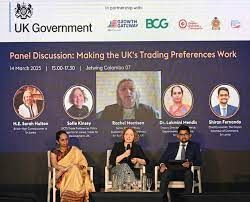UPSC Daily Current Affairs- 20th June 2023 | Current Affairs & Hindu Analysis: Daily, Weekly & Monthly PDF Download
GS-I
Hindu Kush Himalayas
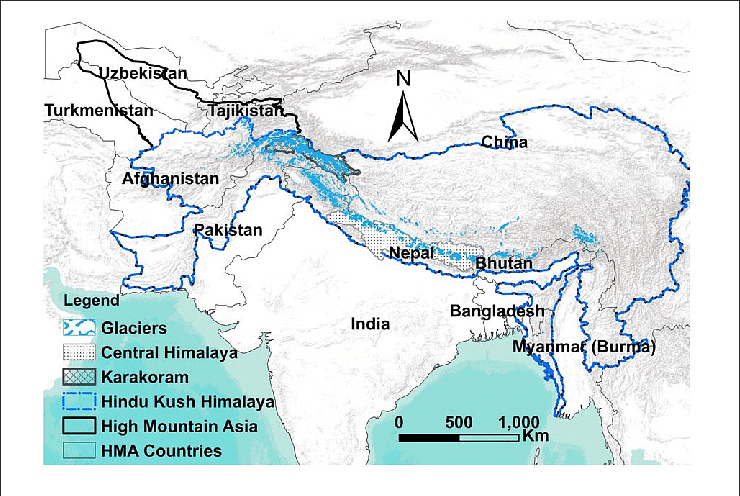
Why in News?
According to a new report from International Centre for Integrated Mountain Development (ICIMOD), the Hindu Kush Himalayas (HKH) have seen a 65 per cent faster loss of glacier mass
About Hindu Kush Himalayas:
- The Hindu-Kush-Himalayan (HKH) region encompasses Afghanistan, Bangladesh, Bhutan, China, India, Kyrgyzstan, Mongolia, Myanmar, Nepal, Pakistan, Tajikistan, and Uzbekistan.
- It is considered the Third Pole (after the North and South Poles) and has significant implications for climate.
- It contains the largest volume of ice and snow outside of the Arctic and Antarctica.
- The ice and snow from this region are an important source of water for 12 rivers that flow through 16 countries in Asia.
Key facts about International Centre for Integrated Mountain Development (ICIMOD)
- It is an intergovernmental knowledge and learning centre working on behalf of the people of the Hindu Kush Himalaya (HKH).
- It is based in Kathmandu, Nepal.
- It works for eight regional member countries – Afghanistan, Bangladesh, Bhutan, China, India, Myanmar, Nepal, and Pakistan.
- Functions
- It serves the region through information and knowledge generation and sharing to find innovative solutions to critical mountain problems.
- It bridges science with policies and on-the-ground practices.
- It provides a regional platform where experts, planners, policymakers, and practitioners can exchange ideas and perspectives towards the achievement of sustainable mountain development.
Source: DTE
Al-Hakim Mosque
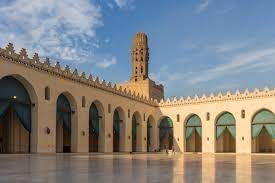
Why in News?
Indian Prime Minister will visit the 11th Century Al-Hakim mosque, restored with the help of the Dawoodi Bohra community, during his first visit to Egypt.
About Al-Hakim Mosque:
- Location: It is a historical mosque located in Cairo, Egypt.
- It is named after Al-Hakim bi-Amr Allah (985–1021 AD), the sixth Fatimid caliph.
- The mosque was originally built by the Fatimid vizier Gawhar Al-Siqilli, but was incorporated into the extended fortifications built by Badr al-Jamali at the end of the 11th century AD.
- The mosque was inscribed as a UNESCO World Heritage Site in 1979.
- Architecture:
- The mosque is constructed of brick with stone facades and minarets.
- The plan of the mosque consists of a triangle with four arcades centering a courtyard. Two minarets flank either side of the façade.
- Originally built outside Cairo’s northern wall, the mosque was incorporated within the city in 1087, transforming its own northern wall and minarets into an integral part of the fortifications.
- The main entrance lies on the western facade of the mosque and is monumental in size and design. It is one of the oldest architectural examples of projecting entrances.
Who are the Dawoodi Bohra community?
- Dawoodi Bohra community is a sect within Shia Islam known for trading and business acumen.
- India is known to have around 500,000 Bohras, including the diasporas spread across the world.
- A large number of the Dawoodi Bohra population reside in India, Yemen, Pakistan and East Africa.
- The Dawoodi Bohras also regard the Quran as the word of Allah as revealed to Prophet Mohammed al-Mustafa, and their lives revolve around its teachings.
- The Dawoodi Bohras throughout the world are guided by their leader, known as the al-dai al-mutlaq (unrestricted missionary), who first operated from Yemen and then, for the last 450 years, from India.
Source: The Hindu
GS-II
Initiative on Critical and Emerging Technology (iCET).
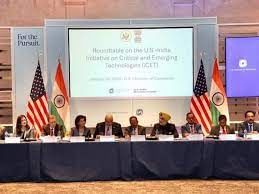
Why in News?
India and the United States recently unveiled a roadmap for enhanced collaboration in high-technology areas under the Initiative on Critical and Emerging Technology (iCET).
About Initiative on Critical and Emerging Technology (iCET):-
- The iCET is a partnership between India and the US to work together in developing important and new technologies.
- Objective: to increase the technology interaction between the US and India while also potentially adding additional strategic depth and breadth to their growing partnership.
- Areas of collaboration under iCET: quantum computing, semiconductors, 5G and 6G wireless infrastructure, and civilian space projects such as lunar exploration.
- Supervision: the Prime Minister’s Office in Delhi and the White House in Washington will oversee and direct the iCET.
Significance of iCET for India:-
- Growing convergence of Indian and US interests can help in managing the security, economic, and technological challenges presented by China.
- It can help secure an alternative for India and reduce dependence on Russian military technology.
- It would help boost India’s technological capabilities and provide India with access to cutting-edge technology and expertise in areas that are critical and emerging in nature.
- It will help India’s economic growth by having more business with the US.
- It will help them bring more investment and employment opportunities.
Source: The Hindu
UK launches Developing Countries Trading Scheme (DCTS)
Why in News?
The launch of the Developing Countries Trading Scheme (DCTS) by the United Kingdom presents a significant opportunity for India and 65 other poor and developing nations.
Developing Countries Trading Scheme (DCTS)
- The DCTS is a preferential trading program introduced by the United Kingdom.
- It replaces similar arrangements that were in place during the UK’s membership in the European Union.
- The scheme aims to support trade and economic growth for 65 poor and developing countries.
Key Features:
- Tariff Reduction: DCTS removes or reduces tariffs on imports from eligible countries.
- Simplified Trading Rules: The scheme simplifies trade procedures to facilitate smoother transactions.
- Enhanced Market Access: It provides improved market access for participating countries’ products.
- Favorable Terms: UK businesses can save costs through reduced or eliminated tariffs on imports.
- Product Coverage: The scheme covers various goods, including clothing, food, and children’s toys.
Focus on Sustainability and Good Governance
- Responsible Trade Practices: Participating countries are expected to adhere to international conventions related to human rights, labor standards, anti-corruption measures, climate change, and environmental protection.
- Mutual Benefits: The scheme promotes sustainable development and creates a mutually beneficial partnership between the UK and developing countries.
Benefits for Participating Countries
- Trade Opportunities: DCTS creates opportunities for businesses and supports livelihoods.
- Job Creation: The scheme aims to generate employment by diversifying local and international supply chains.
- Economic Growth: It contributes to sustained economic growth in participating countries.
- Market Expansion: DCTS helps countries access the UK market and expand their export capacities.
Impact on India
- Trade Opportunities for India: The DCTS presents significant trade opportunities for India.
- Labour-Intensive Sectors: Indian exporters in sectors like textiles, leather goods, and metals can benefit.
- Market Access: The scheme reduces trade barriers and expands market access to the UK for Indian goods.
- Interim Measure: DCTS serves as an interim measure while negotiations for a comprehensive Free Trade Agreement (FTA) between the UK and India continue.
- Future Potential: The DCTS sets the stage for deeper economic ties and a future FTA between the UK and India.
Source: Indian Express
Anna Bhagya Scheme of Karnataka

Why in News?
The government in Karnataka is facing challenges in procuring rice for its ambitious Anna Bhagya scheme.
- However, there is a ray of hope as Punjab has agreed in-principle to supply the required quantity of rice.
What is Anna Bhagya Scheme?
- The state government plans to enhance the free rice allocation per person in the Below Poverty Line (BPL) card from 5 kg to 10 kg.
- The scheme is estimated to cost the exchequer ₹840 crore monthly and ₹10,092 crore annually.
- It is scheduled to be launched on July 1.
Challenges Faced
- The Food Corporation of India (FCI) initially agreed to provide the required 2.28 lakh tonnes of rice but later refused to do so.
- Telangana and Andhra Pradesh expressed inability to supply, while Chhattisgarh government offered to supply 1.5 lakh tonnes.
- Karnataka is now searching for rice in other states and aims to purchase it at ₹34 per kg.
Consideration of Alternative Grains:
- If needed, the state may provide 2 kg of either ragi or jowar, which would last for six months.
- However, the government still needs to supply an additional 3 kg of rice on top of the existing 5 kg allocation.
Punjab’s Offer
- The Punjab government expressed willingness to supply rice to Karnataka in the federal spirit.
- Punjab has enough rice and wants to help mitigate the problems faced by the poor across the country.
Source: PIB
GS-III
Wild orchids of North Bengal
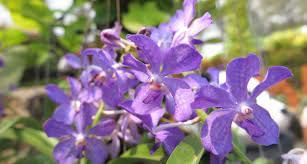
Why in News?
Recent reports suggest, that wild orchids of North Bengal are dying at an alarming rate.
About Wild Orchids of North Bengal:-
- Orchids are attractively flowered and colorful plants.
- They are known for their vibrant and intricate flowers.
- Habitat: they are found in various habitats around the world, including tropical rainforests, mountains, and even deserts.
- India has over 1200 species of Orchids ( 388 are endemic to India, out of which 128 are endemic to the Western Ghats)
- Endemic: a plant or animal native and restricted to a certain place.
Protection Status of Wild Orchids of North Bengal:-
CITES: Appendix II
Types of Orchids
Epiphytic Orchids:-
- These are plants growing on another plant including those growing on rock boulders and are often termed lithophytes.
- About 60% of all orchids found in India are epiphytic.
- Their occurrence decreases with an increase in altitude.
Terrestrial Orchids:-
- These are plants growing on land and climbers.
- 447 species in India are terrestrial.
- These grow directly on the soil and are found in large numbers in temperate and alpine regions.
Mycoheterotrophic Orchids:-
- Thes are plants which derive nutrients from mycorrhizal fungi that are attached to the roots of a vascular plant.
Distribution:-
- Himalayan Zone: Richest in orchid species.
- Northeast India: Highest species concentration.
- Western Ghats: High endemism of orchids.
- Highest Number of Orchid Species: Arunachal Pradesh> Sikkim> West Bengal.
Uses:-
- For aesthetic purposes.
- In herbal medicine.
- Vanilla is produced from Vanilla planifolia orchid.
Source: DTE
UN adopts High Seas Treaty

Why in News?
The United Nations has adopted the first-ever international treaty to govern the high seas and protect remote ecosystems vital to humanity.
- The pact will establish a legal framework to extend environmental protections to international waters, known as the high seas.
- It will be opened for signatures on September 20, during the annual meeting of world leaders at the UN General Assembly.
- The treaty will take effect once it is ratified by 60 countries.
- The high seas are the parts of the ocean that are not included in the exclusive economic zones, territorial sea or internal waters of a State.
- Water beyond 200 nautical miles from the coast of a country is known as high sea.
- High seas are the areas of the ocean for which no one nation has sole responsibility for management.
Need for UN high seas treaty
- Ocean and biodiversity
- The high seas comprise 64 per cent of the ocean surface, and about 43 per cent of the Earth.
- These areas are home to about 2.2 million marine species and up to a trillion different kinds of microorganisms.
- Ocean and global climate
- Oceans are an integral part of the global climate cycle, and perform a range of ecological services including absorption of carbon dioxide and excess heat.
- Hence, this treaty is being considered as a landmark in the efforts to keep the planet habitable.
- Unregulated human activities
- Climate change is already influencing, and is being influenced by, ocean systems, and is exacerbating the pressures on marine biodiversity from unregulated human activities.
- It is these specific challenges — a combination of climate change, biodiversity, and pollution — that the High Seas Treaty seeks to address.
- UNCLOS and concerns regarding the biodiversity
- Though UN Convention on the Law of the Sea (UNCLOS) asks countries to protect the ocean ecology and conserve its resources, it does not provide the specific mechanisms or processes to do so.
- Hence, it is believed that the High Seas Treaty will work as an implementation agreement under the UNCLOS.
- This is similar to the Paris Agreement working under the UN Framework Convention on Climate Change (UNFCCC).
- Agreed under the UNCLOS, this treaty is commonly known as the agreement on biodiversity beyond national jurisdictions (BBNJ).
- UNCLOS is an international treaty that establishes a framework for the use and management of the world's oceans and their resources.
- It was adopted by the United Nations in 1982 and came into force in
- This treaty is the first international law to offer some protection to the nearly two-thirds of the ocean that is beyond national control.
- This treaty will be legally binding in nature.
- Demarcation of marine protected areas (MPAs)
- MPAs are where ocean systems, including biodiversity, are under stress, either due to human activities or climate change.
- These can be called the national parks or wildlife reserves of the oceans.
- Activities in these areas will be highly regulated, and conservation efforts similar to what happens in forest or wildlife zones, will be undertaken.
- Only about 1.44 per cent of high seas are currently protected, according to the International Union for Conservation of Nature (IUCN).
- In December 2022, at the meeting of the Convention on Biodiversity (CBD) in Montreal, Canada, countries had agreed to put at least 30 per cent of degraded coastal and marine ecosystems under effective restoration by 2030.
- MPAs will be helpful in achieving this objective.
- MPAs are where ocean systems, including biodiversity, are under stress, either due to human activities or climate change.
- Sustainable use of marine genetic resources and equitable sharing of benefits arising from them
- Genetic information from marine organisms is already being extracted, and their benefits are being investigated.
- The treaty seeks to ensure that any benefits arising out of such efforts, including monetary gains, are free from strong intellectual property rights controls, and are equitably shared amongst all.
- The knowledge generated from such expeditions are also supposed to remain openly accessible to all.
- Initiation of the practice of environmental impact assessments for all major activities in the oceans
- The high seas are international waters that are open for use by all countries.
- Under the new treaty, commercial or other activities that can have significant impact on the marine ecosystem would require an environmental impact assessment to be done.
- The results of this exercise have to be shared with the international community.
- Capacity building and technology transfer
- This will help small island states and landlocked nations, who do not have the resources or the expertise, to meaningfully participate in the conservation efforts.
- Creation of New body
- The treaty will create a new body to manage conservation of ocean life and establish MPAs in the high seas.
- Many issues remain unaddressed
- Including the mechanisms for policing the protected areas, the fate of the projects that are assessed to be heavily polluting, and the resolution of disputes.
- Ratification is not expected to be easy
- It took UNCLOS 12 years to become international law because the necessary number of ratifications was not reached.
- Provisions of this treaty do not overrule regulations laid down by the authorities that oversee existing high seas activities
- Authorities overseeing high seas activities include:
- International Maritime Organization, which is responsible for shipping;
- International Seabed Authority, which oversees deep-sea mining;
- 17 regional fisheries management organizations tasked with regulating fisheries in various parts of the ocean, including Antarctica.
- Military activities and existing fishing and commercial shipping are, in fact, exempt from the treaty.
- Hence, the treaty cannot create protected areas in places already covered by fishing agreements, even if that fishing is unsustainable and depleting stocks.
- Authorities overseeing high seas activities include:
Source: The Hindu
|
38 videos|5293 docs|1118 tests
|


